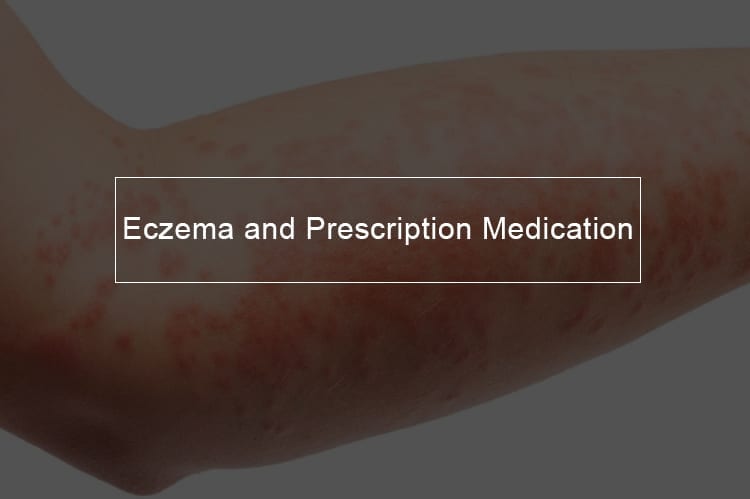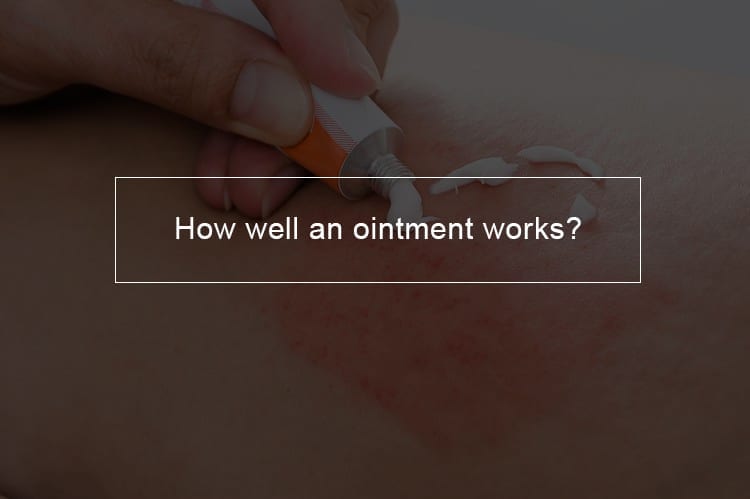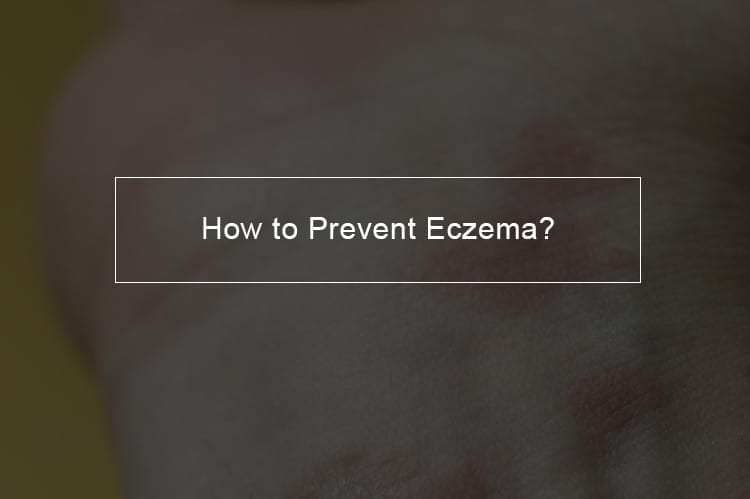
Over the Counter hydrocortisone is frequently the best prescription ointment doctors recommend to treat mild eczema. It relieves your symptoms and help the skin heal when taken or applied as advised by the doctor. Eczema can be an annoying skin condition, whether you deal with it every day or get it often. It's important to work with your physician closely to help you control the itch and rash. The right course of treatment for you will depend on your age, medical history, how bad your symptoms are, and other factors. Ointments are a great treatment option for eczema sufferers due to their composition.
What is eczema?
A look at topical eczema medication
Eczema refers to a collection of skin conditions where sections of the skin get inflamed, itchy, red, cracked, and rough. Blistering can sometimes occur. Different stages and types of eczema affect a lot of people in the world. Eczema is also used specifically to refer to atopic dermatitis, which is the most common kind of eczema.
Atopic normally refers to a collection of diseases involving the immune system, like asthma, food allergies and hay fever. Dermatitis is an inflammation of the skin. Some people may outgrow the condition, while others will continue to have it all their life.
Why use an ointment fro eczema?
An ointment is an oil-based medication preparation that is applied to the skin. Unlike a cream which is water soluble, an ointment has an oil base. Creams have a lower concentration of oil, compared to ointments: the more the oil, the greasier and stickier the ointment. Creams might work better on large areas of the skin because they are easy to spread, compared to ointments.
Several factors are considered when selecting a topical product. The skin will absorb a cream faster, whereas an ointment will remain on the surface longer and also take a while to get absorbed. Your doctor may prescribe a cream if they determine that the medication needs to be absorbed fast or an ointment where slower absorption is desired. Eczema treatment has four main goals:
- To control the itch.
- To heal the skin.
- To prevent flare-ups.
- To prevent infections.
Benefits of using an ointment
People use ointments for many reasons, like soothing pain or medicate themselves. It is critical for consumers to take responsibility and know what the benefits and adverse effects are of using ointments.
Ointments are effective topical treatments
Some ointments show improvement when used to treat skin diseases, such as psoriasis and fifth disease. Ointments have shown to relieve infective eye diseases too.
Ointments are deeply moisturizing
Ointments are used as moisturizers, normally a blend of 80 percent oil and 20 percent water. This combination locks in moisture more effectively than creams or lotions, which are normally made with more water.
Ointments are easy to apply
Ointments are fairly simple to apply to the skin and other areas. There are no complicated procedures involved.
Side effects of using ointments
Strong prescription ointments and/or the improper of them can cause problems like skin allergies, dryness, lesions and even a permanent thinning of the skin.
Oily texture
Since they can either be petroleum- or oil-based, ointments tend to be greasy and occlusive.
Eczema - How ointments work?

How well an ointment works will depend on its active ingredient (the drug in it)and various other factors, like:
- The dosage is taken
- The frequency and potency of the ointment
- The area of skin that it is being applied to
Thinner skin tends to absorb more steroids than thicker skin. This means that, for example, the skin on the palms of your hands and soles of your feet absorbs a smaller amount of the medication, compared to the skin on your face and scalp. The skin on your genitals and eyelids is particularly sensitive.
- The type of product
Ointments are stronger than creams or lotions.
- How it is applied
Ointments work better when applied to wet skin – for example after taking a shower – than when put on dry skin. This medication is more effective when the skin is covered with a bandage or wet wrap. This greatly increases the amount of medicine absorbed.
Ointments: Tips to keep in mind
High-potency and ultra-high-potency ointments are used to treat severe eczema on the soles of the feet and palms of the hands, or for the treatment of eczema on thicker skin.High-potency and ultra-high-potency ointments shouldn’t be used on rashes that cover a large area of skin.Very sensitive areas like your neck or genitals should only be treated with low-potency ointments.
Switching between products of different strengths is possible. For instance, some physicians recommend starting treatment with a high-potency corticosteroid to get the flare-up under control quickly, and then switching to weaker corticosteroid after a few days. Others choose to start with a low-potency corticosteroid and change to a stronger one if the first doesn’t work well as expected. It’s best to have a talk with your doctor about your preferred strategy.
Eczema ointments
Eczema meds relieve your symptoms and help the skin heal when taken or applied as advised. The treatments may have different effects. So you and your physician may need to try a few different remedies to find the right one that works best for you.
Corticosteroid ointments
These treatments include hydrocortisone steroids can quickly ease itching and lessen inflammation. They are available in different strengths, from mild over-the-counter (OTC) treatments to stronger prescription medicines. OTC hydrocortisone is often recommended to treat mild eczema. You may require different strengths of these steroid ointments depending on where and how bad your rash is. For instance, a doctor may prescribe a more potent ointment for thick, scaly skin. Side effects from these meds, like thinning skin and stretch marks, are rare when you take them as instructed.
Nonsteroidal anti-inflammatory drug (NSAID) ointment
These prescription non-steroidal, anti-inflammatory drugs can be used to treat mild to moderate forms of eczema. Daily application for patients two years old and older has been effective in reducing inflammation and helping the skin regain a normal appearance.
Some people get allergic reactions to NSAIDs and may get shortness of breath when using them. Asthmatic people are at a higher risk of experiencing a serious allergic reaction to NSAIDs. Individuals with a serious allergy to one NSAID are likely to experience a similar reaction to a different NSAID. Some NSAIDs contain salicylates which can worsen itching, so caution should be exercised while using them.
Barrier repair moisturizing ointments
You can get these by prescription and over the counter. They help lock in moisture into your skin, repair damage, and reduce dryness, redness, and itching. Some products may contain irritating fragrances or other troublesome ingredients, so speak to your doctor or pharmacist on which ones you should avoid or try.
Tacrolimus and pimecrolimus
Topical medication that treat severe-to-moderate eczema for some people. They reduce inflammation, but they are not steroids. They may increase the risk of cancer of the skin and non-Hodgkin’s lymphoma. Talk to your physician about these risks before you take the drugs.
These meds belong to a group of drugs known as calcineurin inhibitors. Also called immunomodulators, they inhibit specific substances that play aid in inflammation. A thin layer of tacrolimus or pimecrolimus is put on skin areas that are inflamed twice a day. Pimecrolimus has been sanctioned in the form of a 1% cream. Tacrolimus is available in two forms: a 0.1% ointment and 0.03% ointment.
When can tacrolimus or pimecrolimus be used?
Pimecrolimus has been approved to treat moderate to mild eczema, and tacrolimus has been approved to treating moderate to severe eczema. They are only used in specific situations. For example, by prescription:
- If steroids haven't shown enough improvement.
- Treating very sensitive parts like the genitals or face, and especially the eyelids.
- If the patient doesn't tolerate steroids well.
Ointments containing pimecrolimus and 0.03% tacrolimus can be applied to children aged two and over, and used by teenagers and adults too. Those containing 0.1% tacrolimus can only be administered to those aged 16 and above.
If therapy with these calcineurin inhibitors is successful, they can also be utilized intermittently to stop further flare-ups. This involves putting them onto the affected parts of the skin two days per week. Apply then on alternate days.
How useful are pimecrolimus and tacrolimus, and what are the side effects?
Research has shown that these medicines can ease eczema flare-ups. But they aren't more powerful than steroid creams of similar strength. Both medications can have side effects too like burning, redness, and itchiness within the first few days of treatment.You should discontinue using pimecrolimus and tacrolimus if the skin becomes infected.
Eczema Prevention Tips

Skincare at home
When you maintain your skin health, you can stop dryness, itching, redness, and maybe decrease the need for medication. Plus, it feels good to pamper yourself. Try these tips:
Bathe only with warm water. Hot water tends to cause dryness. Use a gentle cleanser instead of soap. Don't use body scrubbers or washcloths, as they can be irritating. Pat dry the skin and be sure to leave your skin damp before applying your medication.
Apply moisturizers every day. Do this right after you shower or wash your hands. Pick fragrance-free moisturizers that will not irritate you. Apply a thick skin ointment that has more oil at night, and wear cotton gloves or socks to lock in the moisture. Gloves can also prevent you from scratching while you sleep.
Avoid bathing and hand washing too much. This will dry out your skin. Keep off alcohol-based hand cleaners, too.
Restrict your contact with skin irritants. These include household cleaners, cosmetics, perfumed soaps, bubble baths, laundry detergents, and other irritants or allergens can make eczema worse. Know what aggravates you so you can avoid it.
Pick cotton clothes that fit comfortably. Wool and synthetic fibers can irritate. Also, be sure to clean new clothes before wearing them. Use fragrance-free soaps, and rinse your laundry well.
Avoid getting too hot. When you’re hot and sweaty, it can cause itching and scratching. After working out, rinse off right away.
Know your triggers. Many individuals with eczema react to allergens like pollen, dust mites, animal dander, and mold. These reactions cause inflammation which worsens eczema.
Ease stress. Stress is a known eczema trigger, and it may be difficult to get time for relaxing, but decreasing your stress levels will help you avoid symptom flare-ups.
Other treatments to help people with severe eczema
Wet dressings - Wet dressings are an effective approach to treat severe eczema and frequently reduce signs and symptoms in several hours to days. Whereas wet dressings may sound simple, a doctor or nurse may require to apply them. They will spread a corticosteroid cream on the affected region and seal it with a wet bandage. The wet bandages are then sealed with dry bandages. Sometimes, a doctor can teach the patient how to rub the wet dressings so you can dress them on at home.
Calcineurin inhibitors - Calcineurin inhibitors are treatments that modify the patient's immune system. Their purpose is to minimize the inflammation linked with eczema. Some of these medications are:
- tacrolimus (Protopic)
- pimecrolimus (Elidel)
These are prescription-only creams that you can rub on your skin. When you use these creams, it is possible to have some skin irritation, itchhing, and burning. This usually fades away after a few applications. Other side effects include but are not limited to cold sores or blisters on your skin.
Oral medications - Doctors may recommend oral medications to people with eczema that is not in one specific region. Those who do not get improvement from creams may also benefit from taking oral medications. Oral medications work by slowing the immune system reaction, which can help to minimize the severity of eczema signs and symptoms. Below are examples of oral medications for severe eczema symptoms :
- oral steroids, such as prednisolone or prednisone
- methotrexate
- azathioprine (Imuran)
- mycophenolate mofetil
- cyclosporine
Whereas these may help to minimize the incidence of eczema, they can come with some severe side effects, including:
- nausea
- kidney or liver failure, depending on the medication
- increased infection risk
- high blood pressure
As a result, these medications are usually used for a short time to reduce severe signs and symptoms.
Ultraviolet light and phototherapy - Light therapy is frequently used to treat severe eczema that does not respond to creams. This engages a machine that exposes the patient's skin to ultraviolet (UV) light. UVB light is most common for this treatment. Nevertheless, some forms of eczema therapy use UVA. According to the National Eczema Association, about seventy percent of people with eczema had improved signs and symptoms after phototherapy. Phototherapy usually engages a visit to a dermatologist’s office two or three times a week. Your doctor may minimize the frequency of treatment if it turns to be effective. However, it can sometimes take one to two months for the treatment to be effective.




